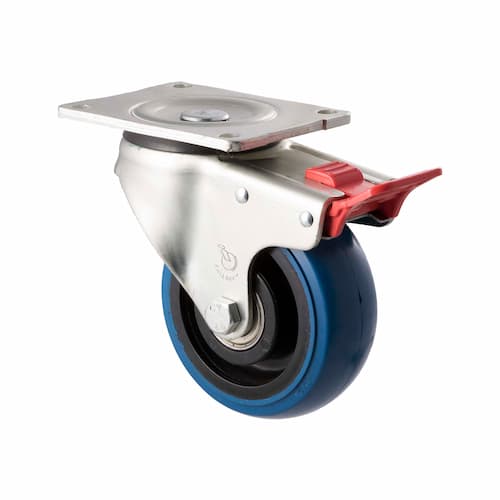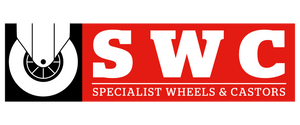
Advice Assistance to help you choose the best castor for your application
There are numerous variables that warrant consideration when procuring wheels or castors. Most castors comprise a wheel (or a pair of wheels) and a fork frame. These components can either be acquired together or separately. You can select from the options provided below, or continue scrolling for insights that can aid you in selecting the optimal castor for your intended purpose. For more detailed or specific guidance, kindly get in touch with us.
Weight Rating: Each wheel and frame carries a weight load rating, indicating the maximum load recommended for each wheel or frame. For instance, a wheel or frame with a load rating of 50kg could be suitable for a trolley equipped with four wheels, where the combined weight of the trolley and its contents is less than 200kg (assuming an even distribution of weight across the four wheels and gentle handling). If the trolley must traverse rough terrain or is subjected to vigorous handling, we recommend opting for a wheel with a higher load rating to ensure added strength.
Castor Height: The height of a castor refers to the measurement from the floor to the top point of the castor. It's essential to take the load height into account as it determines the height of the trolley or equipment above the ground. This aspect becomes particularly critical when replacing a single castor, as any disparity between the load heights of the new and original castors could result in an unbalanced load.
Swept Radius: The swept radius or brake radius denotes the distance from the centre of the swivel mechanism to the outer edge of the wheel or the outer edge of the brake pedal, whichever is further. This measurement is significant as it indicates how far the wheel or brake pedal will extend beyond the edge of the trolley or equipment to which the castor is affixed. This aspect becomes especially crucial when the trolley or equipment has an extended side that protrudes beyond the castor to the floor, a common feature in certain furniture applications. In such cases, the castor requires sufficient space to swivel freely for proper functioning.
Wheels: The performance of wheels is profoundly influenced by their composition. A variety of options exist, including:
- Rubber - tyre: Generally the softest, providing a relatively smooth ride over rough surfaces. Blue and grey rubber tyres are non-marking, making them ideal for indoor use.
- Polyurethane - tyre: Typically harder and better suited for smoother surfaces, while still capable of handling slight variations in flooring. It's non-marking and requires less effort to push compared to rubber.
- Nylon: Easier to push on smoother surfaces but susceptible to damage from dirt or small stones, which can scratch both the wheel and the flooring.
- Cast Iron: Used for heavier applications or in high-temperature environments, available with a polyurethane tyre if needed.
Bearings: Different types of bearings are available, each affecting the effort required to push the castors:
- Plain bore: Highest push effort required but also the cheapest so ideal for tables that don't move often.
- Roller bearings, precision bearings: Commonly used for heavier applications. Roller bearings can help spread impact across the surface of the bearing so are better for rough surface applications.
Wheel Size: The wheel's diameter influences the effort needed to push it. Larger diameters require less effort and perform better on rough terrain. Additionally, the wheel size affects the overall trolley height and the swept radius in swivel castors.
Frames: Frame options are extensive and can be categorised as welded or pressed metal, zinc-coated, powder-coated, or stainless steel. They come in various load ratings. Fixed frames are coupled with swivel castors when straight-line movement is needed. If the load is substantial, swivel castors are recommended for the rear of the trolley to reduce lower back strain.
Brakes: Brakes and locks are exclusively available on swivel castors. The three types are total brakes (affecting both the wheel and swivel mechanism), wheel brakes (affecting the wheel only), and directional locks (locking the swivel mechanism when necessary).
Fitting Options:
- Plate Mounted: These castors possess a plate on top with bolt holes for attaching to trolleys or equipment. Plate sizes, shapes, and bolt hole positions vary. Matching existing bolt hole dimensions is advisable when replacing castors on existing equipment to avoid drilling new holes.
- Single Bolt Mounted: These castors have a hole at the top for attachment with a bolt or expanding adaptor. Adaptors are used to attach castors to tubing and come in round or square shapes, and various sizes.
Feel free to reach out to us for guidance in selecting the most suitable castor for your specific application.

